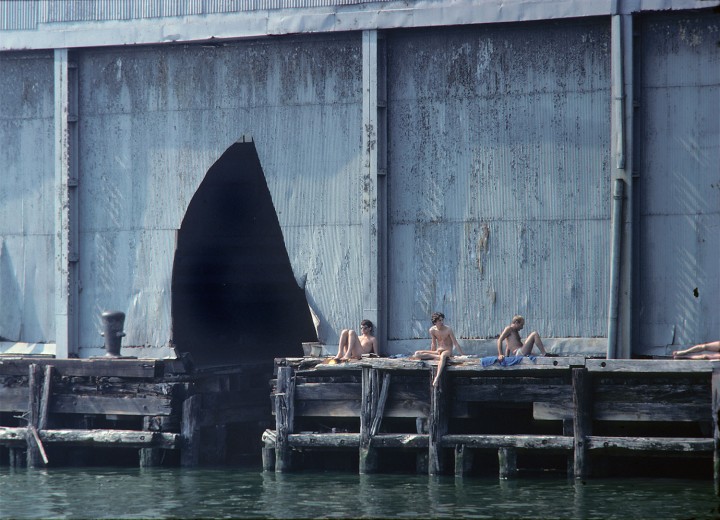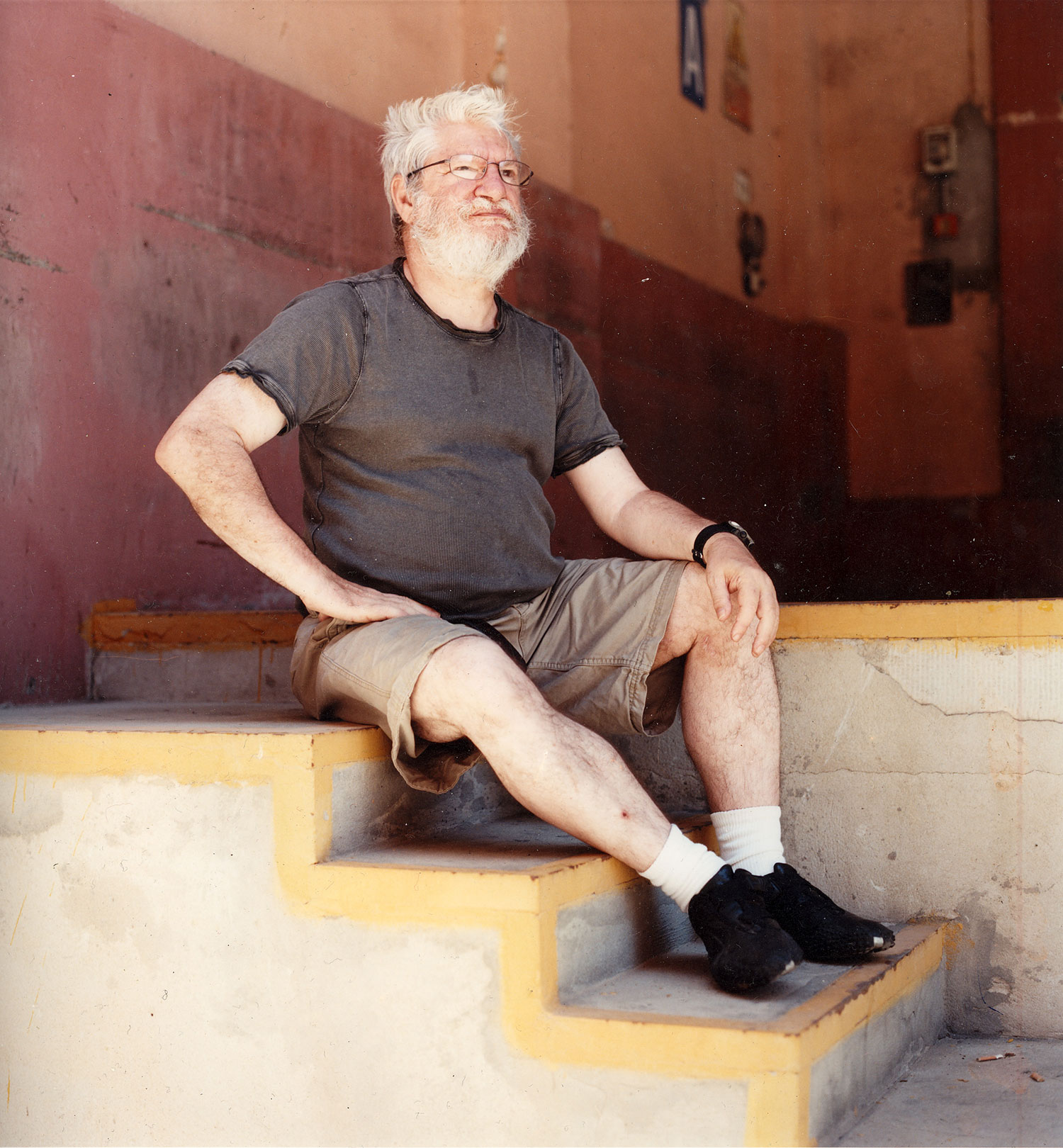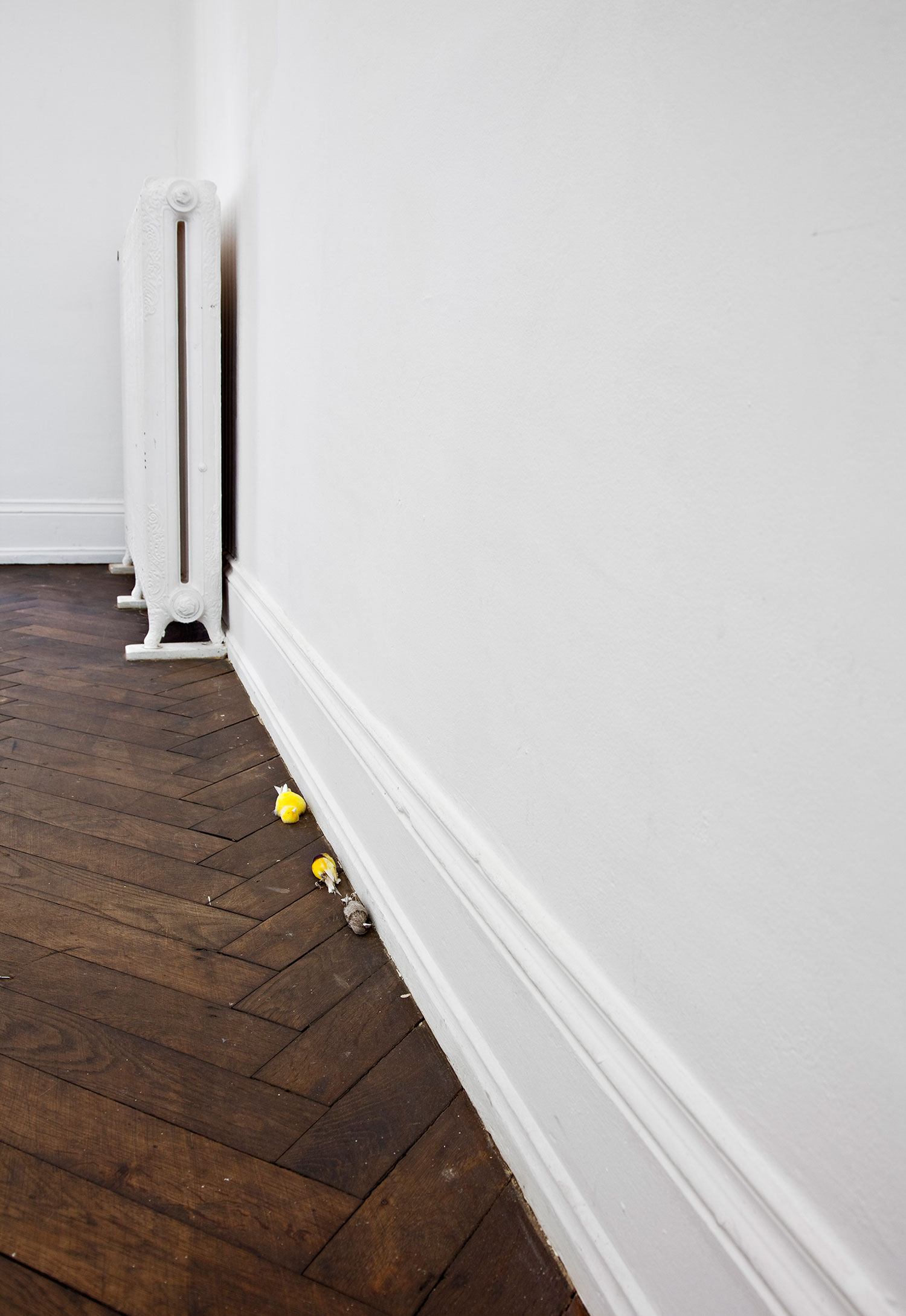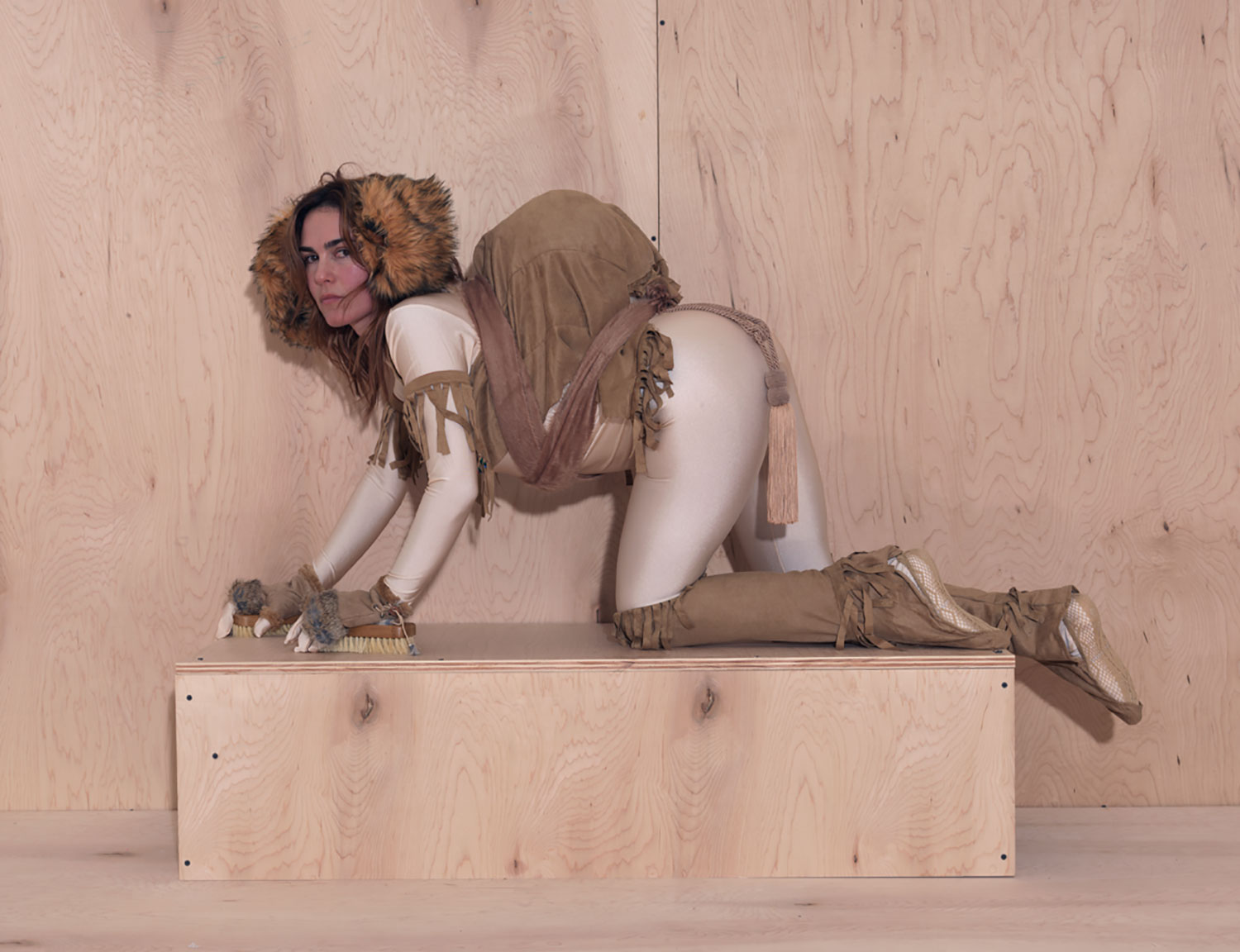Our world has become bigger than ever: as parts of Asia, South America and Africa more fully emerge on the global stage, so do their respective art scenes. Still, the US, even as it struggles with natural disasters and financial uncertainty, continues to play a key role in the art world. New York remains the center, and yet art scenes in cities like Chicago, Portland, Detroit, Dallas and Los Angeles are increasingly finding a voice internationally. In an attempt to capture a sense of this shifting panorama, Flash Art has invited art professionals based in various cities across the US to respond to the current state of the country and to provide insight about their hometowns.

1. Do you still see New York as the center of contemporary art in the US after environmental and economic changes such as natural disasters and tax increases?
2. What are the emerging cities in the US for contemporary art?
3. Which recent exhibitions did you find most interesting in the US?
4. What is your favorite place in your own town?
Ian Berry
Director, The Frances Young Tang Teaching Museum and Art Gallery at Skidmore College, Saratoga Springs, New York
1. New York still stands as the center of the art world. So many ideas and opportunities swirl around all sorts of creative people living and working there. The resilience of the greater New York scene after the hurricane convinced me even more how much faith I have in our community of artists, curators, critics, gallerists, collectors and so many others who work together to push art and ideas forward.
2. I enjoyed meeting groups of artists in Seattle, Santa Fe and Chicago this year. Smaller communities like Portland, Maine, and Troy and Hudson, New York, are places where exciting homegrown things are happening with alternative modes of production and support.
3. “Inventing Abstraction,” the current exhibition at MoMA, is a revelation — groundbreaking works beautifully installed with many new names added to the story of this important time. The interdisciplinary attitude of the curator made for an inclusive and expanded view of the context in which new art is made.
4. When the Tang Museum is full of people from a wide variety of backgrounds — young, old, regular visitors, first-timers, students, artists and families — it feels like our town square. Conversations build from the exhibitions on view to specific issues in our town and in individual lives. This kind of creative and open exchange makes me feel most engaged and at home with my neighbours.
Douglas Chrismas
Director and Chief Curator, ACE Gallery, Los Angeles
1. New York continues to be the center of contemporary art in the US. The fact that New York survived Hurricane Sandy last fall and has recovered also, including New York’s survival of economic changes, attests to its continued strengths as a specific geographical zone for exhibiting and selling art of our times.
2. Three lead cities: New York, Los Angeles and Chicago. Following very close are other cities such as Miami, Houston, Dallas, San Francisco and Seattle; the list continues to expand to such cities as Denver.
3. The current touring retrospective of Roy Lichtenstein.
4. In Los Angeles, my favorite place is the Los Angeles County Museum of Art — a museum to go to be visually and intellectually engaged.

Pati Hertling
Lawyer and independent curator, New York
1. I think that while these factors certainly have an economic impact on the New York art market in terms of selling and exhibiting art within a commercial context, flooding, storms, tax increases, etc. do not have an immediate effect on how artists, curators, writers, etc. live and interact. In order to be a center of contemporary art, a city does not only need collectors and galleries. Therefore I think that it will not have much of a negative impact on New York in terms of being a center of the arts. Maybe the steady augmentation of rents and living expenses will though. Furthermore, the fiscal situation in New York might still be more favorable than in Europe, where important increases on the value added taxes will be effective starting in 2014.
2. Detroit, Portland, Braddock, Milwaukee…
3. Lutz Bacher at Peter Currie Alex Zachary; “The Piers: Art and Sex along the New York Waterfront” curated by Jonathan Weinberg with Darren Jones at the Leslie-Lohman Museum of Gay and Lesbian Art; “Commercial Psycho” curated by Will Benedict at Andrew Kreps; “It is what it is. Or is it?” curated by Dean Daderko at the Contemporary Arts Museum in Houston; “Moyra Davey: Spleen. Indolence. Torpor. Ill-humour” and Zoe Leonard, both at Murray Guy in New York.
4. The New York waterfronts.
Mike Ursuta and Blaize Lehane
Owners, Ramiken Crucible, New York
1. New York is still the center of the world art movement. No other place has the critical rigor of New York, and the will to weirdness. We even have floods to wash away the dumb commercial decadence that builds up in the system. So what if art dealers go hungry? No other neighborhood on the planet Earth had a higher concentration of people who don’t pay artists and steal from each other, all while eating sushi every night. Taxes? The US isn’t France. We could use some higher taxes, especially if the government uses it to rebuild the Rockaways. The Rockaways need the help.
2. The emerging cities are the ones that don’t proclaim it with a PR campaign. 2013 is the year when everyone will realize that public relations is bullshit and doesn’t work, and all the PR people will lose their jobs. Hopefully. The cities are: Baltimore and Austin. Baltimore is Nudashank, Dope Body, Doctor Neurotic and John Waters, who is the godfather and perhaps the smartest man of art and letters and filth in the US. Austin is the Berlin of America, except none of the rich kids have figured it out yet because BBQ isn’t cool. Actually, the secret best art thing in the US is Canada. Canadians are natural born liars, which makes them good actors and artists.
3. I saw an exhibition in Savannah, on the way down to Miami, at a little gallery called Molasses. They don’t even have a website. They had an exhibition — titled “Fuck White People” by an artist named Scott Hugh Douglas — unframed photo prints of things like Jeep Cherokees and running shoes and snowboards and those bikes that fold up.
4. The best place in New York is Madison Square Garden when Melo is cookin’ soup. The best new gallery is either Eli Ping or JTT. The most fun you can have on a Saturday night is naked twister at Maxwell Graham’s apartment, that’s for sure. The best downtown bar is a place called “Corn in the Poop” which nobody knows about yet. They only play Burzum and Public Enemy and serve Diet Coke.
Michelle Grabner
Artist, co-curator of the 2014 Whitney Biennial, Professor and Chair of Painting and Drawing at the School of the Art Institute of Chicago
1. New York is still the “center” and will be unless it is washed out to sea. It is a reality based on cultural density.
2. Portland, Kansas City, Milwaukee, Minneapolis, Cleveland: the medium-sized cities, not the “second cities” like Chicago or Los Angeles as they have an identity crisis that cripples them.
3. “Painter, Painter,” the upcoming show at the Walker Art Center; “Exceptions: Lucie Fontaine and Claire Fontaine” at The Green Gallery in Milwaukee; the new expanded Cleveland Art Museum; “Focus: Hito Steyerl” at the Art Institute of Chicago.
4. Julius Caesar Gallery, New Capital and the Graham Foundation.

John Riepenhoff
Artist and owner, The Green Gallery, Milwaukee
1. New York sets an outrageous standard for art production and support for artists anywhere today. Watching from Milwaukee, that seems to be unwavering.
2. Contemporary art production has been steadily decentralizing with access to contemporary art information and resources being increasingly less reliant on where one wakes up in the morning or goes to bed at night. For me emerging art scenes are built on individuals fostering communities through venues and institutions they start and run. The vanguard of these movements can live anywhere, so to identify an emerging art city think of your favorite artist and check out where they live. Portions of New York and Chicago are still reinventing themselves, but they have more weight to move when making change. Los Angeles seems to be transforming at a quicker pace. The smaller the city the more influence an individual can have on a community. If I didn’t think Milwaukee was a fertile cultural environment I wouldn’t be living here. I think Andrea Zittel’s projects in Joshua Tree, California, serve as a good model, as does Michelle Grabner and Brad Killam’s The Suburban in Oak Park, Illinois, and The Poor Factory in Manawa, Wisconsin.
3. “Jeremy Deller: Joy in People” at the ICA in Philadelphia effectively translated projects that were staged in mostly small cities across the UK — fun, inspiring and full of impact. Jimmie Durham’s “Maquette for a Museum of Switzerland” (2011) at the Swiss Institute had a transformative quality for me too.
4. Inova has been the longest standing go-to contemporary art place for me in Milwaukee. Their Mary L. Nohl Fellowship show included an awesome installation by American Fantasy Classics with its own nightclub, noodle shop and small school among other things. Circle A Cafe is the best place in town to get a meta-dose of cultural emersion.

Martha Schwendener
Art writer and critic, The Village Voice and The New York Times
1. New York is at a critical juncture. I can speak less to tax increases (as a writer, I have never earned much money anyway) and more to recent environmental and political upheavals. The global political-financial crisis of 2008, the Occupy movement and Hurricane Sandy have made it impossible to ignore disparities of wealth and the destruction capitalism has wreaked upon our planet, but also more locally on our city. New York and its ecosystem cannot be separated. For instance, oyster beds surrounding the area would’ve protected the land somewhat from the hurricane, but these have been stripped away over the last four centuries by maritime industry. Similarly, the art-ecosystem of New York has been upset over the last few decades by neoliberal policies that have turned artists into proto-gentrifiers for the real estate industry, cultural enhancers of the city — and, at the same, indebted subjects who owe hundreds of thousands of dollars to educational institutions, or have otherwise gone into irremediable debt to become artists. New York has benefited greatly from its artists, but it is not providing mutual support. And now, with Chelsea confronting the realities of global warming — the entire district was under four feet of standing water, most galleries did not have flood insurance, and a great deal of damage went unreported — the physical infrastructure of the market that was supposedly going to support all of these artists and cultural workers — many of whom earned advanced degrees and worked as unpaid interns for the privilege to work in the art field — is in a very precarious state.
2. I would say primarily Detroit, because it confronted many of the things I mention above decades earlier than other US cities, and has become a hotbed of creativity and experimentation, with people looking for new ways to live and make art — but particularly to integrate art and living.
3. I have been focused less on exhibitions in recent years and more on what I would call art existing “in the wild” because I increasingly find art institutions so compromised. One trend I do find interesting, however, is how galleries have become mini-museums, offering historical shows of overlooked artists from the ’60s, ’70s and ’80s.
4. The Rockaways became an extraordinary little community in recent years, with artists and surfers mingling with a local community that includes lots of New York’s firefighters and recent immigrants. The area was hit hard by the hurricane, however, and so its future, like many places, is uncertain.

Andy Stillpass
Collector, Cincinnati, Ohio
1. Other than the immediate catastrophic consequences suffered in the art world, especially in Chelsea by a number of galleries and non-profits, I have not witnessed any long-lasting effects. Most of those organizations that closed seem to be back in business now or soon ready to reopen. However, these observations are made by a distant observer, unaware of what is going on behind the scenes. Certainly after Irene and Sandy those based in Lower Manhattan have ecological cause for concern. At the risk of sounding overly pessimistic, I’ve wondered for a over a decade now about all the market speculation that goes on and the sustainability of the economic bubble that could burst at any time and submerge a large portion of the New York art world.
2. I don’t know of any firsthand, although I keep hearing about Portland. I’m sure lots of things are happening all over the country. I’m always fascinated when I learn about a group of artists coming together from one place developing exciting new practices. It’s amazing how all those great young artists like Wade Guyton, Meredyth Sparks, and Kelley Walker suddenly came out of Tennessee.
3. There have been a number of extraordinary shows recently that dispelled any negative thoughts I might have had about New York as a vital center of contemporary art. During the last quarter of 2012, ten shows that immediately come to mind are Kerstin Brätsch, Jeremy Deller and Alex Katz at Gavin Brown, Wade Guyton at the Whitney Museum, Robert Irwin at Pace, Matt Keegan and Eileen Quinlan at The Kitchen, Nick Mauss at 303, Bernadette Corporation at Artists Space, Seth Price at Petzel, Artie Vierkant at Higher Pictures, Viola Yesiltaç at Balice Hertling & Lewis and Andrea Zittel at Andrea Rosen.
4. Cincinnati Art Museum, Cincinnati Contemporary Art Center and Visionaries and Voices.
Ali Subotnik
Curator, Hammer Museum, Los Angeles
1-2. New York is the center of the art market, but for art production and dialogue, I don’t think there is one center. So many artists are making work in cities like Los Angeles, Berlin, Chicago, Portland, Milan, London, Rotterdam, Paris.
3. “Destroy the Painting” at MOCA in Los Angeles and “Rosemarie Trockel: A Cosmos” at the New Museum in New York.
4. Venice Beach.





